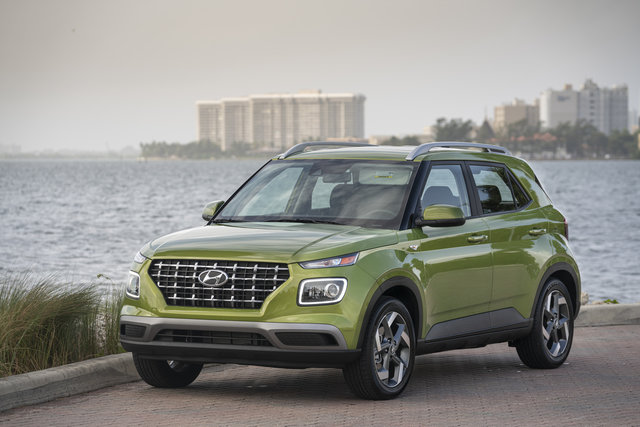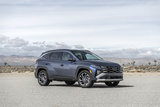Choosing the right subcompact SUV can be difficult, especially when faced with two excellent models like the Hyundai Venue 2024 and Kona 2025. Both share Hyundai's reputation for value, reliability and advanced technology, making them attractive options for budget-conscious buyers or those looking for a small, versatile SUV. However, despite these commonalities, the two models address different needs and preferences. Let's begin by exploring their similarities before detailing ten significant differences.
What the Hyundai Venue 2024 and Kona 2025 have in common
- Build quality and reliability: Both the Venue and Kona benefit from Hyundai's build quality, with solid construction, intuitive technology and a competitive warranty.
- Technology and Connectivity: Both models are equipped with modern features such as Apple CarPlay, Android Auto and touchscreen infotainment systems, as well as available safety technologies like Emergency Brake Assist.
- Compact dimensions and urban suitability: As subcompact SUVs, the Venue and Kona are perfectly suited to city driving, thanks to their reduced size, which makes maneuvering and parking in tight spaces easier.
- Energy efficiency: Although the engines differ, both models aim to minimize fuel consumption, making them attractive to those who want to cut fuel costs.
Despite these similarities, the differences between the Venue and Kona show how each vehicle is designed for distinct driver profiles. Here's a look at the top 10 differences:
10 Key differences between the Hyundai Venue 2024 and the Kona 2025
- Powertrain and Performance Options
The Kona 2025 offers a wider choice of powertrains, including a base 2.0-liter 4-cylinder engine, a more powerful 1.6-liter turbocharged engine, and an all-electric version. The Venue 2024, meanwhile, is limited to an efficiency-oriented 1.6-liter 4-cylinder engine. If you need more power or an electric option, the Kona stands out.
- Driving skills and dynamics
The Kona offers optional all-wheel drive (AWD), improving traction and stability on slippery surfaces or during light off-road excursions. The Venue remains exclusively front-wheel drive (FWD), making it less suitable for drivers who need greater safety in difficult conditions. For more versatile driving, the Kona wins out.
- Interior space and layout
Although both vehicles are compact, the Kona offers a slightly roomier interior, especially in terms of shoulder width. Up front, Kona passengers enjoy 1,443 mm of shoulder room, compared with 1,369 mm in the Venue, ensuring a more comfortable cabin.
- Rear comfort
In the rear, the Kona also offers more space. Rear passengers enjoy 970 mm of legroom, compared with just 871 mm in the Venue. This difference can be significant for those who regularly transport growing adults or teenagers.
- Loading capacity
For those who need more cargo space, the Kona stands out with a significantly greater load volume. With the rear seats folded down, the Kona offers up to 1,804 litres, while the Venue achieves 903 litres. Even with the seats up, the Kona offers 722 litres versus 527 litres in the Venue, making it a better option for weekend trips or carrying more luggage.
- Exterior design and dimensions
The Kona has a more dynamic, sporty design, reinforced by a slightly more imposing silhouette. The Venue, on the other hand, adopts a squarer, more traditional look, with compact dimensions that make it easier to drive and park in urban environments.
- Awards
The Venue is more affordable, appealing to first-time buyers or those looking for a basic vehicle at an attractive price. The Kona offers a wider range of finishes and options, with a higher starting price, reflecting its appeal to those prepared to invest more for additional features and performance.
- Variety of finishes
The Kona offers more trim levels, including performance-oriented versions and eco-friendly variants. The Venue's trim levels are simpler, offering good value for money with essential functionality, without options for enhanced performance or electrification.
- Driving experience
With its turbo engine available, the Kona offers a more dynamic driving experience with better acceleration and performance more suited to the freeway. The Venue focuses more on simple, efficient urban driving, with moderate acceleration and unsurprising handling.
- Target audience
The Venue is aimed at those who value economy, practicality and ease of use in dense urban environments. The Kona, on the other hand, is designed for buyers looking for a more versatile vehicle, capable of responding to a wider range of driving scenarios, including long journeys and varied road conditions.
Conclusion: Which model suits you best?
If you're looking for a more versatile subcompact SUV with several powertrain options, including an electric version, or if you need all-wheel drive, the Kona 2025 is probably the best choice. Its roomier interior, additional performance options and cargo capacity make it a more complete option for a variety of driving needs.
However, if budget is your main concern and urban maneuverability is your priority, the Venue 2024 offers excellent value for money. Its compact size and lower cost make it ideal for city dwellers looking for a practical vehicle with essential modern features.
Comparison table Summary
|
Features
|
Kona 2025
|
Venue 2024
|
|
Motorization options
|
2.0L, 1.6L Turbo, Electric
|
1.6L 4 cylinders
|
|
All-wheel drive
|
Available
|
Not available
|
|
Shoulder room Front
|
1,443 mm
|
1,369 mm
|
|
Space for rear legs
|
970 mm
|
871 mm
|
|
Loading volume with seats down
|
1 804 L
|
903 L
|
By taking these similarities and differences into account, you can make an informed choice about which Hyundai model best suits your lifestyle and driving needs.






